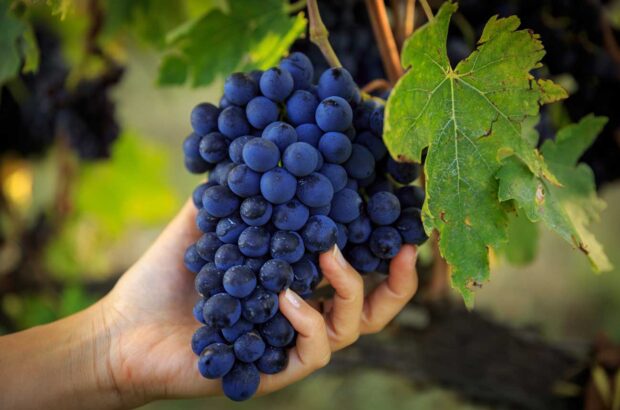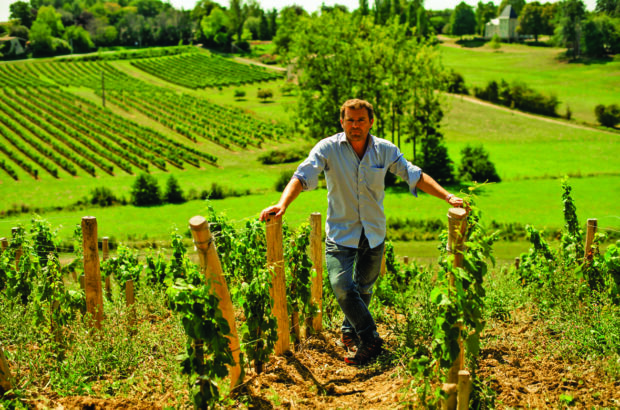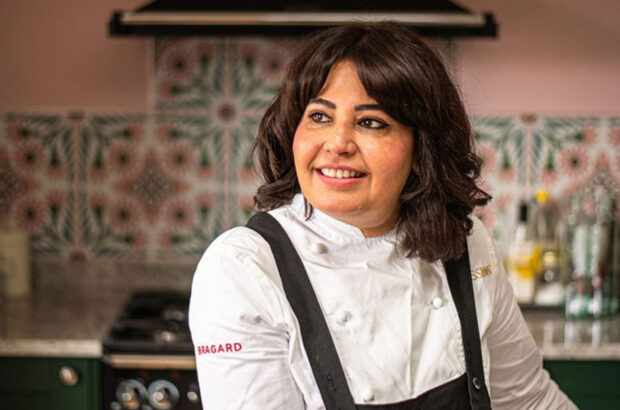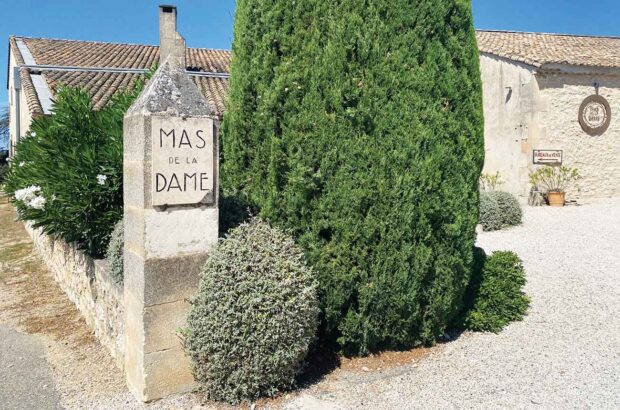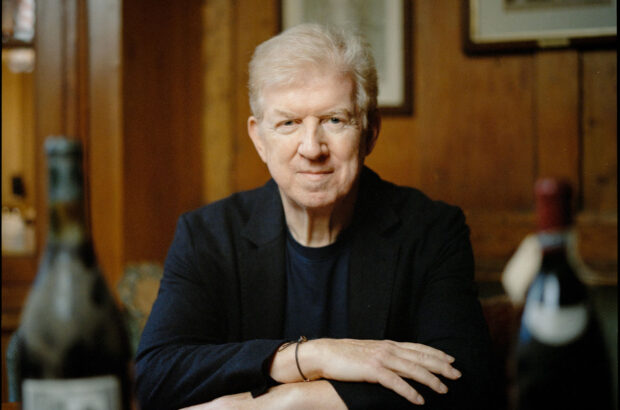Walla Walla in Washington state is billed by some as the Napa of the North. LINDA MURPHY looks at its rise in popularity, and profiles seven of the leading players.
The drive from central Washington state to Walla Walla, at the base of the Blue Mountains in southeastern Washington, has been the same for years, the landscape dotted with alfalfa fields, horses, barns and grain elevators. It’s when you pull into the once-sleepy town that you notice big changes are taking place. There’s now an 80-room hotel, wine shops and bistros, coffee roasteries and – at last, say the locals – a top-notch, white-tablecloth restaurant, Whitehouse-Crawford. Pop into the Vintage Cellars wine bar and you hear about the boom in Walla Walla wineries – 45 at last count, where just nine existed in 1995 – and in vineyards, 445ha (hectares) where there were only 16ha back in 1989, when retired civil engineer Norm McKibben began planting grapes and keeping track of the numbers.
https://www.decanter.com/features/aint-seen-nothing-yet-washington-state-249690/
The first nine bonded wineries – Leonetti, L’Ecole No 41, Woodward Canyon, Waterbrook, Seven Hills, Canoe Ridge, Walla Walla Vintners, Glen Fiona and Dunham Cellars – are still on top of their game, yet they now have lots of competition and there’s more on the way. On a tour of the region, McKibben points out a dozen new sites in Walla Walla Valley that are being developed as vineyards, many with plans to build production facilities. His own Les Collines Vineyard is one of those new developments, and when its 121ha are fully planted, McKibben will oversee more than half of Walla Walla’s planted hectares, including his Pepper Bridge and Seven Hills vineyards, long-time sources of grapes for wines made by Leonetti, L’Ecole No 41, Glen Fiona and Andrew Will.
McKibben has also been good to the new kids on the block, selling fruit from Pepper Bridge and Seven Hills to newcomers such as Reininger, Tamarack, Three Rivers and Forgeron. He believes that their success is an investment in Walla Walla’s long-term future. ‘Norm gave us a chance to start with great fruit,’ says Chuck Reininger. ‘He’s committed to keeping the quality of the region’s wines high.’
Northstar, Stimson Lane’s ultra-premium Merlot-only brand is moving from Yakima Valley to a new Walla Walla facility in time for the 2002 harvest. In a bit of a surprise move, Glen Fiona winemaker and partner Berle ‘Rusty’ Figgins left the Syrah specialist in August to become Northstar’s winemaker, collaborating with Yakima Valley-based Stimson Lane winemaker Gordy Hill and California consultant Jed Steele. Figgins, younger brother of Leonetti’s Gary Figgins, says he moved to Northstar to work with Stimson Lane’s ‘top Merlot grape sources’ and ‘for the opportunity to continue working with Bordeaux varieties in such a high-calibre environment.’ At the time of publication, Glen Fiona had not named Figgins’ replacement. Some call Walla Walla Napa North, and the wines, mostly Cabernet Sauvignon, Merlot and Syrah, fetch Napa-like prices. Jean-François Pellet, winemaker at McKibben’s Pepper Bridge Winery, says the wines of the area ‘combine the classic elegance of Bordeaux with the voluptuous body of California’. That combination has been successful thus far in Walla Walla; time will tell if there will be enough room in the boom for everyone. There are many new stars in the Walla Walla sky; here are a few worth watching: Cayuse Vineyards Christophe Baron is a passionate young Frenchman who grew up in the Marne Valley and arrived in Walla Walla in 1996. He soon had the locals clucking over his decision to plant Syrah on a cobblestoned piece of land 24km south of town. ‘They told me I was crazy, that the site was too cold, that organic farming would never work,’ Baron says of his Cailloux Vineyard.
But Cailloux has thrived. Baron now owns 28ha in five locations – all in stony riverbeds. There is the Armada Vineyard with Syrah, Grenache and Mourvèdre; Cerise (Syrah plus Cabernet Sauvignon and Cabernet Franc, used for his Camaspelo Bordeaux-style blend); Coccinelle (Syrah and Roussanne), and Chamberlain, planted to Syrah, Cabernet Sauvignon and Tempranillo. Current annual production is just 2,000 cases of several small lots of wine, à la Burgundy. ‘What do you expect?,’ Baron says with a shrug. ‘I’m French.’
Pepper Bridge Winery
Norm McKibben, who had the gumption to start growing grapes here in 1989, also had the sense to leave the winemaking to a professional when he built his own winery in 2001. McKibben wanted to produce small lots of exceptional Merlot, Cabernet Sauvignon and Syrah from his Pepper Bridge Vineyard, and found an experienced Napa Valley winemaker to do it in Jean-François Pellet.
Pellet, born and raised in Switzerland, was making wine at Heitz Cellars in Napa when McKibben called. The opportunity to work with Walla Walla grapes and to make wine in the region’s best-equipped facility was all he needed in order to relocate to Walla Walla. Production is still small – 860 cases of Merlot and 2,100 cases of Cabernet Sauvignon from the 1999 vintage – but Pepper Bridge is projected to grow by 1,000 cases a year.
Reininger Winery
Chuck and Tracy Reininger met in college in Seattle, earned degrees in finance and decided to move to Tracy’s hometown of Walla Walla in 1992, to raise children and start a business. Chuck, a mountaineering guide, intended to open a microbrewery, but changed his fermentation focus after helping out friends Eric and Janet Rindahl at their Waterbrook Winery. He began hanging out with local winemakers and making wine at home, and by 1997 the Reininger brand was born.
Today Reininger turns out deeply fruited, plush red wines, including Merlot, Cabernet Sauvignon and Syrah in amounts of 850 cases or less. Chuck says he is committed to using Walla Walla fruit – ‘It’s important to have a geographical identity for the wines’ – and has purchased grapes from Pepper Bridge, Spring Valley and Cayuse to establish the brand. The Reiningers and partners are developing their own vineyard on the west side of Walla Walla Valley.
Spring Valley Vineyard
The Corkrum family has been farming in Walla Walla since Uriah Franklin Corkrum bought land in 1915. His granddaughter, Shari Corkrum Derby, and her husband Dean, still farm the 240ha property, and planted their first wine grapes in 1993. ‘At $10 a bushel, wheat farming was not going to be enough to make a living,’ Dean Derby says, so we looked at alternative crops and gave wine grapes a try.’
They started with 1ha of Merlot and later added Cabernets Sauvignon and Franc, Petit Verdot, Syrah and, more recently, Malbec. They used to sell their fruit to area wineries, but the Derbys wanted their own label and called son Devin and his wife Mary home to make and market the wines. Devin’s first two efforts of the flagship wine, a complex blend of Merlot, Cabernet Franc and Petit Verdot called Uriah, are outstanding. Spring Valley’s first Syrah, called Nina Lee in honour of Devin’s vaudeville-performing grandmother, is scheduled for a November 2002 release.
Tamarack Cellars
Ron and Jamie Coleman own the Ice-Burg Drive-In, a popular place for Walla Wallans who crave the classic American hamburger and a chocolate shake. Ron, a former wine retailer and sommelier, had finer dining and beverage consumption in mind when he started Tamarack Cellars in 1998, in a restored World War II fire station near the Walla Walla airport.
There, he makes Merlot, Cabernet Sauvignon and a blend called Firehouse Red, following the traditional Bordeaux model of leaner, more elegant wines rather than the ‘in-your-face-with-fruit’ style often typical of California. Tamarack’s grapes come from Walla Walla (Seven Hills and Spring Valley vineyards) and sub-appellations within the huge Columbia Valley, including Yakima Valley and Red Mountain. The Colemans’ wines are among the best value from Walla Walla.
Three rivers winery
Partners Duane Wollmuth, Bud Stocking and Steve Ahler had a grander plan than just making fine wine when they opened Three Rivers Winery in 2000. Strategically located on Highway 12 just west of town, the winery has a retail shop, conference facilities, a natural amphitheatre for concerts and a three-hole golf course. ‘We designed Three Rivers from the consumer standpoint, to give visitors a complete winery experience,’ Stocking says. ‘It was something we felt Walla Walla lacked as a wine region.’
The partners hired Charlie Hoppes from Chateau Ste Michelle to produce their first vintage. Hoppes’ assistant, Holly Turner, now handles the winemaking with Hoppes continuing on a consulting basis. In some cases, the wines are blends of fruit from throughout the Columbia Valley region; others are from Walla Walla, and a handful are vineyard designates, including a Boushey Vineyard Syrah, a Sangiovese from Pepper Bridge Vineyard and a late-harvest Gewurztraminer from Wollmuth’s Biscuit Ridge Vineyard.
Trey marie winery
Eric Dunham isn’t new to Walla Walla – he’s a native – nor to its wine industry, having worked as assistant winemaker for L’Ecole No 41 before founding Dunham Cellars in 1995. What is new is Dunham’s Trey Marie Winery, a separate business started in 1998 by Dunham’s family and the Syre family of Bellingham, Washington.
While Dunham’s focus for his Dunham label is single-variety and single-vineyard Cabernet Sauvignon and Syrah from Walla Walla, Trey Marie’s niche is blended wines from Bordeaux varieties, sourced from throughout the Columbia Valley.
The signature Trey Marie wine is a Merlot/Cabernet Sauvignon/Cabernet Franc blend called Trutina (Latin for balance), a concentrated gem with juicy fruit flavours and a lush finish. ‘We’re committed to making the best Bordeaux-style blends we can for Trey Marie and in quantities that allow us to reach a wider market,’ says Dunham, who expects to have 7,000 cases of Trey Marie from the 2000 vintage.



